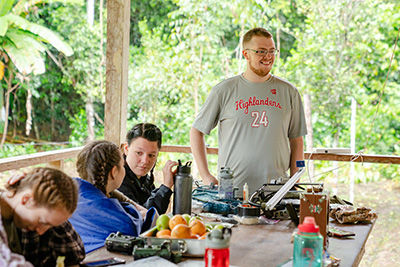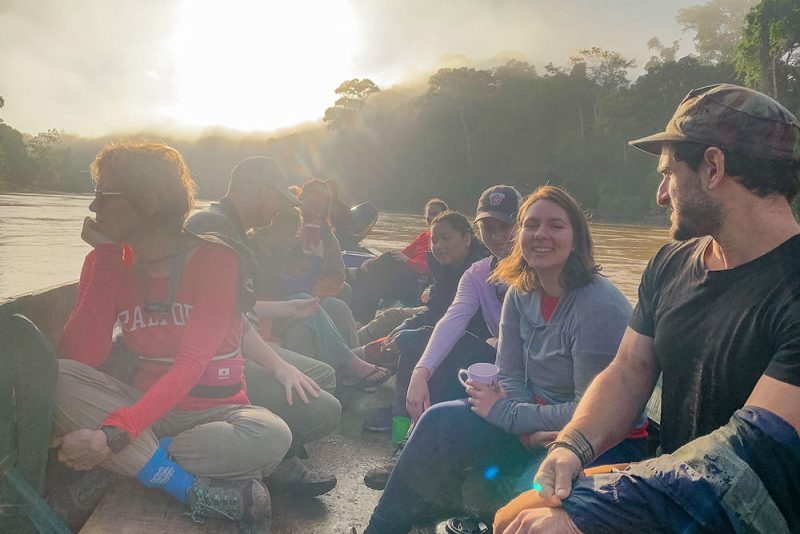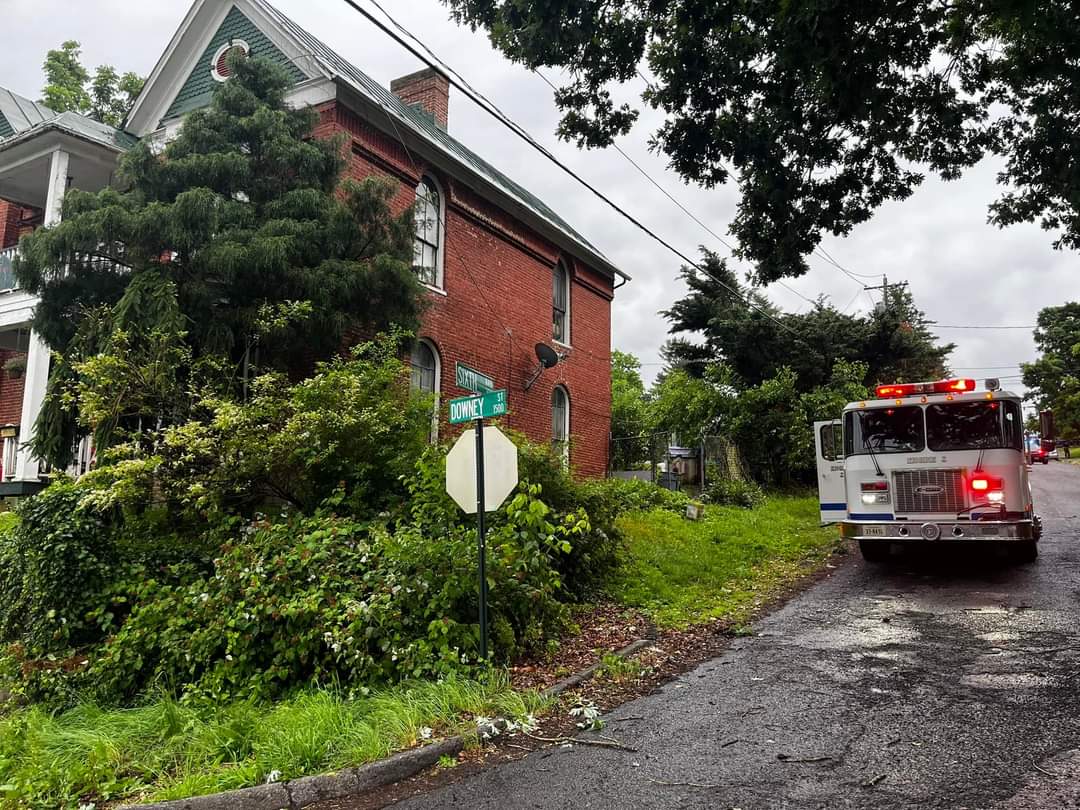


Nine Highlanders are currently in the Peruvian jungle as part of the Radford Away Research Expedition (RARE): Amazonia.
Students participating in RARE: Amazonia, such as this group from 2019, travel to the Las Piedras Biodiversity Station, a laboratory located in the midst of more than 30,000 acres of rainforest.
The trek gives undergraduate students the opportunity to explore an Amazonian rainforest ecosystem and a forum in which to conduct scholarly projects. RARE: Amazonia was previously held each spring from 2015 to 2019 and is now resuming after being paused during the pandemic.
This year’s journey, which began May 15, will be overseen by Assistant Professors of Biology Joy Caughron and Tara Pelletier.
Some of the projects and experiments that will take place include creating an ethnobotanical field guide; documenting the presence of chytrid fungus, an amphibian pathogen; and examining the effects of immersion in nature on a person’s well-being and mindfulness.
Students in the RARE: Amazonia program will spend part of their time in Puerto Maldonado, near Peru’s eastern border, where they will connect with guides from the conservation and ecotourism group Tamandua, LLC, whose mission is to protect and conserve Peru’s jungles.
During the trip, Radford’s group will also travel to the Las Piedras Biodiversity Station, a laboratory located in the midst of more than 30,000 acres of rainforest.
This remote locale – reached following an eight-hour journey by both car and boat – will provide the students a foreign environment in which to conduct experiments that compare and contrast with the results they’ve recorded domestically in such fields as animal behavior, parasites of mammals and birds, carcass decomposition and the immune responses of insects in both logged and unlogged areas of the jungle.
From mid-May to early June, students in the RARE: Amazonia program spend part of their visit in Puerto Maldonado, near Peru’s eastern border, and will also travel to the Las Piedras Biodiversity Station. (Google)
During their stay, students will also visit different parts of the Madre de Dios region.
Biology Professor Jason Davis has worked with RARE since its inception and said the students and their projects cover an array of interests.
“It’s not exclusively a science trip,” Davis explained. “Each year, we really want to take a range of students – artists, anthropologists, sociologists, someone studying business or nursing.
“These students are our researchers; they are engaged in a process of discovery, whether that is studying, for example, the language traditions of the local people or exploring microbial fauna,” he said.
“They’re doing their own thing, which gives them real ownership of it, and helping each other with different projects at the same time.”
The RARE group is scheduled to return to the United States on June 5.
You can learn more about the project and see video footage of the 2019 expedition on Radford’s RARE website.
Also this month, a separate branch of RARE – the Radford Away Research Expedition: Appalachia – will undertake a similar mission, albeit somewhat closer to home. RARE Appalachia will spend the second half of May visiting such local areas as Troutdale, Damascus, Abingdon and Burke’s Garden. Along the way, they’ll camp out, visit a coal mine and stop in at Abingdon’s Barter Theatre.
Neil Harvey for Radford University

